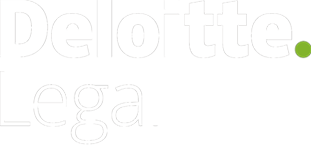Keep Calm And Regulate: How Disruptive Technologies Are Disrupting Regulators.
Driverless automobiles—we’re all excited for their arrival and the day when a long drive means catching up on work or taking a nap. Not surprisingly, auto makers and technology companies are excited, too, and are well down the path to presenting a viable driverless vehicle.
But before you start making a list of television series to binge watch in your car, know this: the excitement is very likely premature—not because of the technology, but because regulators are still trying to fully understand the implications of driverless cars and struggling to define new ways to address these innovations.
This is a problem—not just for driverless vehicles, but for all business models that depend on the cooperation of regulators. Virtually everything—from artificial intelligence and 3D printing, to sharing economy services such as AirBnB and Uber, and even to applications we’ve yet to imagine will need to bridge this gap.
Too fast, too soon
The disconnect between regulators and tech innovators is the result of a few things. One is speed. From development to implementation, technology helps products grow and hit markets at incredible speeds, often too fast for regulations to keep up.
Another is a lack of constructive dialogue between the two parties. Innovators tend to talk to other innovators, which is great for innovation. It’s not so great, though, when those products have to interact with people and societies—the very same people governments and regulators are tasked with protecting.
Driverless cars might be the perfect illustration of the regulatory disconnect. On the one hand, these vehicles will have four wheels and engines and in that sense, existing rules for automobile regulation—from emissions and safety to traffic laws—still apply. What creates challenges for regulators is what’s different about driverless cars.
For example: before they are ready for the road, traditional cars must be thoroughly tested. Do the brakes, steering, lights, etc. work properly? But with driverless vehicles, software will do the braking and steering and lighting. As yet, there is no testing for this outside the technology company itself.
Driverless vehicles will also have to satisfy regulators when it comes to interacting with cars driven by human beings. In some countries, a stop sign is merely a suggestion: drivers slow down but usually drive straight through.
Will the software be able adjust to these different driving cultures? Complications like these explain why a manager from one large North American city recently told me that, while manufacturers see driverless cars on the road in five years, he can’t see regulations being in place for at least ten or more.
Get talking
Early dialogue addressing the concerns of regulators before problems arise will be critical to the future of regulation. In some ways, none of this is new. Regulators have been dealing with disruptive technologies for decades. What is new is the sheer speed and scalability. Today’s companies grow at extraordinary speed while regulators work at the same pace as always.
So the question is: how do regulators and innovators work together to close the gap? Over the next few months in this space, we’ll examine this issue more closely and look at a few solutions. We’ll explore some existing models and how regulators might adapt them for a future marked by disruption. We’ll show how regulators are becoming more networked. We’ll delve into the ongoing problem of human nature interacting with technology. And finally, we’ll look at how some jurisdictions are using regulations as a competitive advantage.
The thrill of new technology is undeniable – the world shares a common interest in seeing how these innovations will interact with and benefit communities across the globe. As technology drives forward, it’s critical to pause and consider the enormous responsibility government has in ensuring the safety and inclusivity of its citizens. Elon Musk’s outspoken position on AI highlights the need for regulators to stay focused on the long game—because while the role of the innovators is to disrupt, the role of the regulator is to find the balance between innovation and social responsibility.
I invite you to learn more about Deloitte's thoughts and insights on the Future of Regulation.
By Mike Turley, Government & Public Services Global Leader
key contact

Jim Jamison
Partner
Hongkongjimjamison@deloittelegal.com.hk

